Ergotron Trace Dual Monitor Arm Review
- Lab tested
Like most reviews sites, our editorial staff and laboratory testing expenses are partially offset by earning small commissions (at no cost to you) when you purchase something through those links. Learn More

Overview
| Review Summary |
The entire patented mechanism of the Ergotron Trace is highly unique, making it sort of the Bang & Olufsen of monitor arms—pricey, but extremely cool mechanically and aesthetically. And it’s still less expensive than most Humanscale arms that interior designers love to specify. The clever patented design gets around the main disadvantage of most monitor arms, the arcing motion of their counterbalance systems. The Trace also has a more stable, steady movement because it doesn’t have the elbow joints that most monitor arms do. Where conventional arms can require you to put your shoulders into an awkward set of movements just to share your screens with a coworker and move them back, collaborating is now finger-touch easy. It also dampens vibrations well, making it a great choice for standing desk and treadmill desk users that often struggle with the shakiness of a massive desktop sitting atop two lifting columns with an inherent amount of deflection (i.e. shakiness). |
|---|---|
| MSRP / List Price | $659 |
| Street Price | Scan for available discount deals |
| Shipping |
Free |
| Warranty |
15 years |
| Colors Available |
Black and white |
| Adjustment Range |
Height Adjustment Range (“stroke”): 11.05″ |
| Weight Capacity |
4 – 13 lbs per display |
| Number of Monitors Supported |
2 |
| Product Weight |
19.5 lbs. |
| Shipping Weight |
24 lbs |
| Typical Assembly Time |
10 minutes |
| ANSI/BIFMA Certified |
Meets or exceeds BIFMA x5.5 and CSA CAN/CGSB44.227 |
| Competition | Compare to Other Top-Rated Monitor Arms |
| Where to buy |
Buy on Amazon |
Rating
| Ease of Assembly | |
|---|---|
| Stability | |
| Reliability | |
| Customer Experience | |
| Quality and Aesthetics | |
| Innovation | |
| Value | |
| Suitability for Treadmill Desking | |
| Positives | The constant-force, straight vertical motion of the Ergotron Trace eliminates the arcing motion that most conventional ergonomic monitor arms exhibit when raising or lowering your displays. The entire device has an exceptionally high-quality feel, with many small features you won’t find on any other mechanical monitor arm system. It truly stands on its own from any other monitor arm on the market in terms of both designer styling and smoothness of both vertical and horizontal movement. For those who need to occasionally collaborate with coworkers or clients, the Trace’s patented mechanism eliminates the awkwardness of repositioning the monitors for sharing. It dampens movement quickly, making it a good option for anyone whose desk is a little on the shaky side (as many standing desks are, inherently, when raised to standing heights, and inherently, treadmill desks). There’s also the fact that both monitors will move together, working around yet another common annoyance with dual monitor arms. |
| Negatives | The Trace has a “performance envelope” just like any other monitor arm, and it's decidedly middle-of-the-road. It doesn’t reach as high or have as long of an extension as many of the other monitor arms we've reviewed, but most users’ display monitors are in the middling range of weight and size, where the Trace can run circles around lesser arms in smoothness of movement. Of course, all this wonderfulness comes at a price, and this is indeed one of the more expensive mechanical monitor arms on the market—clearly targeted at the user who is willing to spring a little more for the very best performing and best looking product. |
Bottom Line
Why Straight Up And Down Is A BIG Deal
The biggest disadvantage of most ergonomic monitor arm designs, most of which were designed before the age of standing desks, is the arcing motion of their counterbalance systems. This means that even though you can set the edge clamp so that the monitors are centered on your keyboard, as soon as you change position between sitting and standing the center will likely shift a couple of inches left or right. This is because when we stand our lower spines stretch out, requiring more distance between our keyboards and our monitors to prevent craning of the neck.
There are workarounds for this problem. For example, you can buy a larger display and move your working application windows to the center as much as possible. Or, if you have room behind your desk, you can stick the elbow of your monitor arm straight back so the motion will be straight up and down with no arcing to the left or right.
Neither of these hacks is ideal. The first workaround effectively reduces your monitor size. The second is a situation many users won’t be able to utilize because their desks are up against a wall or a privacy panel, blocking the path for the monitor arm’s “elbow” to jut backward. This is where the Ergotron Trace comes in. While there are electric monitor arms coming out soon that can also move straight up and down, the Trace achieves this less expensively with the very smooth spring action inside the center pole.
(Note that we’ve separately reviewed the Ergotron Trace Single Display Monitor Arm, although the differences between the two are primarily in the display(s) weight and size limitations, and the fact that the Single has a quick-release VESA bracket, whereas this Dual unit does not.)
The lift mechanism is indisputably state-of-the-art. The rollers that align the column are of high quality and durable nylon, and they do not squeak. The whole unit feels very solid and precision-made. The fact that it meets or exceeds BIFMA x5.5 and CSA CAN/CGSB44.227 certification standards tells you it has been tested up to 15,000 cycles and is a true commercial-grade product that hospitals and government agencies will buy.
In fact, we were surprised to see it only had a weight capacity of 26 lbs (13 lbs per display), though that should cover the vast majority of monitors measuring under 26″ in width. If you’re using a large panoramic display that weighs 40 pounds the Trace will not be an option for you. See our round-up of monitor arm reviews to find the right heavy-duty arm for your dual displays, including Ergotron’s HX Dual Monitor Arm, as well as iMovR’s Compass Dual and Tempo Dual (20-lb capacity per arm), TopView Dual, ZipView Dual and ZipView Unison (17.6 lbs per display), but note that if your monitors exceed 20 lbs you may be better off using two heavy-duty single arms like the iMovR TopView Max (42 lbs) or Tempo HD (30 lbs).
Beyond the straight up and down motion of the column, the arm itself extends straight out. Then it can pan 240 degrees, rotate 360 degrees and has a tilt range of 35 degrees (the top edge can tilt back 30 degrees or forward 5 degrees.
The straight up and down, and straight in and out movements might sound limiting, but they don’t feel that way. We liked the way the monitor arm felt. It was extraordinarily fluid to move and more stable than most pole-based monitor arms. It also felt easier to get into a very specific position vs. trying to achieve the same with a monitor arm that has one or two elbows, which can be finicky to get into just the right spot without using both hands and putting some shoulder into it.
Along with that solid feel, the arm dampens movement faster than other monitor arms, because there are just fewer degrees of motion. The stability, motion dampening, and the lack of an arcing motion due to the straight up and down design make this a great option for treadmill desk users.
There is of course with any new design a downside. And in this case, it’s a slightly greater “retraction depth” of 7”, where most monitor arms have a 4”-5” retraction depth. If you’re working on a shallow desk or have very large displays and need your displays farther away those extra couple of inches can make a difference. For standard 30”-deep desk users this is not going to be a problem, but if you’re on a shallower, say 24”-deep desk, the fix would be to add a keyboard tray to restore that ideal depth-of-field of one extended arm length from eyes to screen.
The Trace is based on a finely-tuned mechanical spring counterbalance, which has its advantages and disadvantages as compared to arms that use gas piston counterbalance “springs.” Be sure to check our article on The Differences between Gas Piston and Metal Spring Counterbalance Mechanisms in Monitor Arms, for more on how monitor arm counterbalance mechanisms differ. Suffice to say that the Trace’s clever, patented design takes advantage of the benefits of metal coil springs (including longevity) while eliminating their disadvantages compared to gas cylinders.
An Elegant Way To Push Dual Monitors Up and Down
The possibilities for dual monitors with this design are enticing because they move together, avoiding another common annoyance with monitor arms: Adjusting both monitors to line up with each other every time you move them up or down. Each time you switch from sitting to standing your lower spine will stretch out, and you’ll want to adjust your monitors upwards a few inches. If you have a dual monitor mount with independent arms, the effort expended to adjust both monitors such that they visually line up with each other every time you change posture gets old quickly.
Ergotron does offer this handle on some of their other monitor arms, like on the HX Dual we recently reviewed, and it’s a snazzy solution.
Assembly

Assembly was average for what we expected with a high-end monitor arm, meaning there are several steps but it all comes together well and as it should. Expect about 15 minutes to assemble and adjust the arm.
Assembly consists of attaching the clamp (which works with desktops up to 2.55” thick), attaching the arm to the pole, the crossbar to its center VESA mount, installing the cable management track, and then finally attaching the both of your monitors to the crossbar.
Adjusting the weight counterbalance is easy, but also so precise that you can actually spin the Allen key with a finger 110 times to traverse from the minimum combined weight of 6.5 lbs to the maximum weight of 26 lbs. There is a nice storage spot for the Allen wrench at the top of the support pole, and a very handy readout on the front of the column that shows you the counterbalance setting on a scale of 1-10. This is great for bulk installations where all the Trace arms can be set to the proper monitor weight in advance of taking them out in the field to individual offices.
Cable Management
The Trace has a built-in cable management track that guides your cables down the pole to the desktop surface. We were split on whether we liked it or not. It detracted somewhat from the arm’s unique look, but it’s better than loose cables running down unencumbered from the monitor. One note is that the cables exit the track in front of the base, so unless your monitor arm is mounted right next to a grommet hole, you’ll see your cables go around the base before falling behind the desktop. For tips on how to handle cable management on adjustable height workstations, check out our cable management roundup.
The Takeaway

Without a doubt, the main selling point for the Ergotron Trace Dual Monitor Arm to most consumers is going to be the straight up and down motion. This gets around the main disadvantage of most monitor arms, the arcing motion of their counterbalance systems. There’s also the fact that both monitors will move together, working around yet another common annoyance with dual monitor arms. And then there’s more stable, steady horizontal movement because it doesn’t have the elbow joints that most monitor arms do. It’s easier to get into a specific position and it also dampens motion well, making it a good pick for treadmill desk users.
For other consumers, we imagine the main selling point would be the top-drawer, “Bang & Olufsen” styling. At $659, it’s definitely one of the pricier dual monitor mounts out there, but you’re definitely getting your money’s worth, and it’s still cheaper than a Humanscale equivalent all while performing much more elegantly.
If you’re looking for an arm that goes straight up and down but can handle a greater number of monitors (up to 6) and/or larger monitors than the Trace can, be sure to check out iMovR’s EMMA electric monitor arm series, which can handle up to 150 lbs of VESA-mounted devices.
The Trace is manufactured by Minnesota-based Ergotron, a global leader in the monitor arm category with 40 years of history (they’ve been around as long as the VESA standard has existed). While Ergotron does have its own e-commerce site it’s always easiest and safest to purchase their products from Amazon, for the added consumer protection and ease of returns.

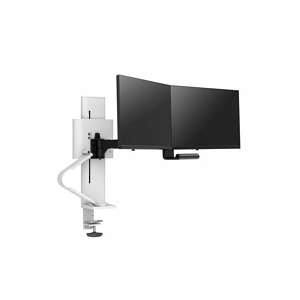
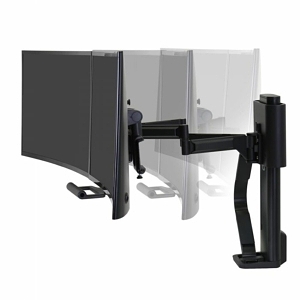
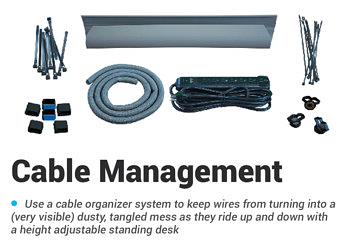
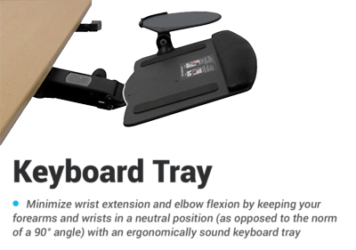
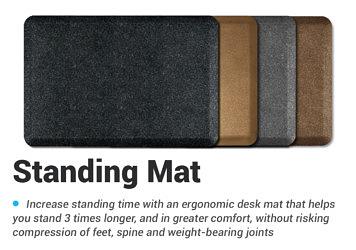
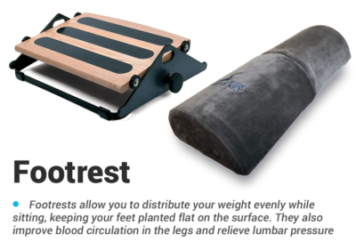
0 Comments
Leave a response >